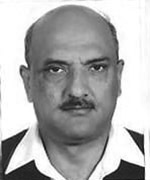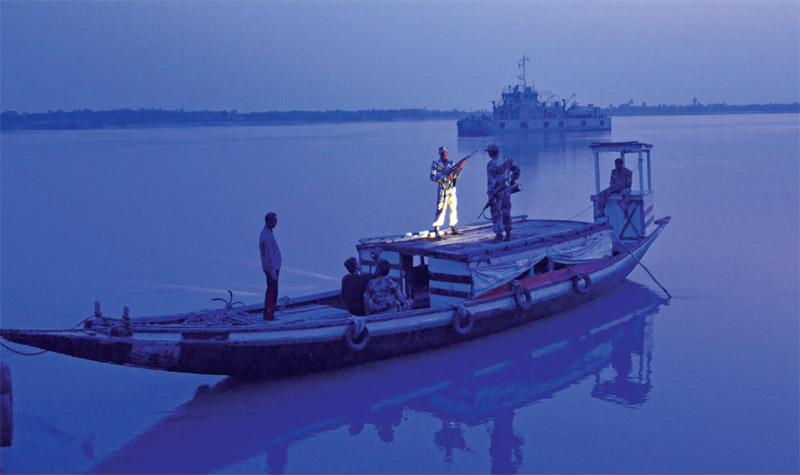As central police forces are deployed for a wide range of duties, continuous training is a must
 S K Sood
S K Sood
India has five Central Armed Police Forces (CAPFs) with a combined strength of over one million. These forces have well-defined roles. The Border Security Force (BSF), Indo Tibetan Border Police (ITBP), Sashastra Suraksha Bal (SSB) have been raised for border management functions while the Central Reserve Police force (CRPF) is the designated force for internal security. The fifth, the Central Industrial Security Force (CISF) has the role of providing security to industrial and government establishments. The role of the CISF has been recently extended to include private establishments also. Members of these forces are trained to perform their role in the hierarchy and the specific role required by their respective forces.
The training enables personnel to orient their attitude towards the ethos of the organisation and develop skills and professional knowledge to equip them to effectively perform their responsibilities and tasks. Traditionally, a great deal of emphasis is laid on the inculcation of knowledge and skills. But this does not make training complete as there is a third and very important objective that needs to be recognised and incorporated in training. This relates to developing appropriate attitude among the trainees towards their work and the public they come into contact while on duty. It demands the trainee’s effective response.
The CAPFs have created an elaborate infrastructure and systems for training at different levels. For instance, the BSF Academy at Gwalior imparts basic induction training to the newly-inducted officers and subordinates. There are four other major institutions for training in specialised areas like weapons, signals communications, commando training, jungle warfare, support weapons and field engineering etc. There are also about a dozen subsidiary training centres for newly-recruited constables.
The BSF also has a system of company collective training wherein one company of each battalion is withdrawn by rotation and put through collective training for a certain duration before being redeployed for operations.
The BSF is deployed in different terrains varying from normal to difficult and very difficult areas. The troops therefore have to be rotated periodically. This entails orientation of troops to the new place of deployment every few years. Thus, a system of pre-induction training has been institutionalised in the force with the aim to familiarise troops before their deployment. Similar infrastructure and systems have been put in place in the other four CAPFs for training of their personnel.

But although the training infrastructure and systems appear to be well structured, there are several lacunae in reality. The training programmes tend to be repetitive with contents not in consonance with the stated aims and objectives for the relevant tasks particular to the area of deployment or level of responsibility. These programmes therefore fail to enhance the skills, knowledge and efficiency of the forces.
A detailed study conducted by a reputed institution for one of the forces a decade ago brought out serious gaps in the training policies. Some of them are:
- a) Recurrent training does not adequately equip (both technically and managerially) for multiplicity of roles and tasks, which goes beyond their mandated role.
- b) Training programmes do not result in the desired level of skill upgradation and help improve performance.
- c) Officers are often nominated for courses that prepare them for jobs, which they have already been doing efficiently for several years, thereby wasting a training vacancy.
- d) The training does not fully equip young officers with the demands of their role.
- e) Course curricula for different levels of officers overlap and are repetitive.
- f) Given the fact that operational requirements in different areas are distinct and specific, terrain-related issues are not given due importance.
- g) Officers are deficient in using IT to enhance their performance.
- h) Attachment with other agencies does not provide requisite exposure to the role, operational tasks and functioning of those organisations.
The duties and performance expectations of personnel will change according to the rank they attain. Periodic training should equip the personnel to perform their duties and responsibilities as they move up the ranks. But that is not the case because of repetitiveness of course curricula. Training programmes should therefore be prepared after proper TNA (Training Need Analysis) for each rank.
At the lowest level the expectations are successful execution of the assigned task by making optimum utilisation of resources available. The operational level leadership and troops will, therefore, be required to be trained in the nitty gritty of various operations, whether they be border guarding, internal security, elections or aid to civil authorities. Junior commanders and troops are often deployed in small teams where they face with several contingencies for which guidance or orders may not be forthcoming from higher commanders in the required time frame. They are, therefore, required to be trained to take their own initiative to deal with such contingencies.
Middle rung officers have to perform both operational and supervisory roles. The expectations from them are the ability to plan, organise resources and get the plan executed by subunits under their command. They are also expected to influence the outcome of operations through personal presence close to the scene of operation, enabling them to carry out close supervision and initiate course correction if required to achieve success. The training requirements for them is to inculcate the ability to appreciate various factors affecting the operations and prepare workable plans, including contingencies, and the ability to take quick decisions. They are expected to perform man management functions, interact with the local population and liaison with civil authorities. For this they must be equipped with soft skills in order to get maximum support of the local population and project a good image of their organisation.
Supervisory officers, on the other hand, are required to coordinate and supervise operations and provide logistical and other support to operational units and formations. This involves budgeting for large scale procurements. Personnel management is also a very important responsibility of supervisory officers. They require exposure to the principles of management and leadership functions. They also must have exposure to issues impacting the security environment of their area of influence as it might impact the deployment pattern and logistical requirements.
While the training programmes should focus on imparting knowledge, not everything can be taught in formal training programmes. Personnel, especially the leaders, must be encouraged to keep themselves updated with the latest trends in international relations, particularly with neighbouring countries, besides carefully studying the internal security threats and likely impact on their deployment.
You must be logged in to view this content.

